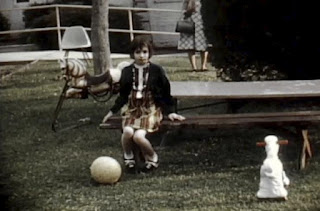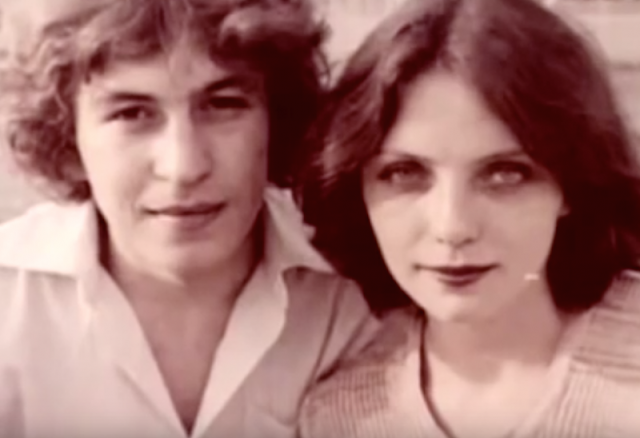It's About Indian Air Force
Indian Air Force is an interesting topic to read and know about with many jaw-dropping facts that are particularly unbeknownst to the general populace of one of the largest air forces in the world. Here I will discuss some 11 amazing facts about the Indian Air Force from past and the present which I hope , people would like to know about :
A. When IAF inducted 140 Fighters in just 1.5 years !
You read that right. After the 1965 Indo-Pak War , Indian Air Force was heavily modernizing its combat fleet and to stop the squadron numbers from diminishing. For this purpose , Sukhoi Su-7 was selected which was the first Sukhoi to serve in Indian Air Force. The procurement were done in a record time which were quite unprecedented as Indian Air Force went on to induct 140 Su-7 in just 1.5 Years which was almost 8 Fighters each month. No.26 Squadron first converted to Su-7 followed by No.101 Squadron and during the induction process , IAF raised some 6 Strike Squadrons which served with distinction during the 1971 Indo-Pak War.
B. When an Indian Air Force Mig-25 shot the sun !
A Lamborghini Huracan Avio posing in front of the MiG-25 Foxbat at Indian Air Force Museum at Palam AFS
On 24th October 1995 , an IAF Mig-25 ‘Garuda’ flown by Group Captain, Air Marshal Mukerji shot the sun during the total solar eclipse which might sound simple but was quite challenging as the pilots were required to be specialized in navigation and earth’s geometry. An upward looking camera was cued by the pilot towards the sun while another pilot flew the ‘Garuda’ in the exact direction as the earth rotated around the sun. They filmed the magnificent scene from the stratosphere for one and more minutes. Mig-25 was one of the legends of Indian Air Force which served as a Strategic Reconnaissance Aircraft and its presence was kept as a secret for many years as it flew many hostile High-Risk Sorties in enemy airspace clicking high defenition pictures of enemy installments on the ground.
C. Indian Air Force ‘Mammoth Formation’ :
The largest Indian Air Force Formation flew from Ambala Air Force Station on 1987–88 which was nicknamed the “Mammoth Formation”. These aircrafts consisted of Canberra Bomber Aircraft , Mig-25 “Garuda” , Mig-29 “Baaz” , Ajeet , Mirage 2000 , Mig-27 “Bahadur” , Hawker Hunter , Jaguar “Shamsher” , Mig-23MF and finally the good-old Mig-21.
D. When an Indian Air Force Military Transport Aircraft flew without using propellers :
Here is an Indian Air Force C-119G Flying Boxcar Military Transport Aircraft somewhere in 1960s. If you closely notice this particular photo , the propellers are idle and the engine has been put off. Now you must be wondering how is this particular aircraft flying.
This has been made possible only by its Orpheus Jet pod which has been placed on top of its fuselage. The aircraft is flying solely due to the power supplied by the pod as it was utilized by IAF to shorten the takeoff distance thereby enabling the aircraft of Short Takeoff and Landing Capabilities. IAF also used the J34 turbojet engine for short take-off and IAF’s C-119 also holds the record for being the first aircraft to take-off from the Daulat Beg Oldi with an Orpheus Pod.
E. How was Garud Commando Force established :
In early stages , PARA SF and MARCOS Officers advised the top brass of Indian Air Force to establish a dedicated Commando Force modeled on the Commando Force of Royal Air Force Regiment. They also advised IAF Officers to procure few numbers of C-130J Strategic Airlifters which can be used to air drop the Commandos in Combat Search and Rescue Missions and also in high-threat missions. Garuds were established on same lines as RAF Regiments and were trained on similar lines as PARA SF and MARCOS though the top brass of Indian Air Force did not pay heed to the second recommendation and no additional C-130J were procured.
F. Indian Air Force was the first Air Force to Operate Fighter Jets in Asia :
Indian Air Force inducted de Havilland Vampires with the No.7 Squadron “Battle Axes” in 1949 making Indian Air Force the first Air Force in Asia to induct Fighter Jets in its inventory. Vampire served in almost all Fighter Squadrons of Indian Air Force for a span of over 3 decades as a Fighter-Bomber and Reconnaissance Aircraft.
G. Indian Air Force was the first Air Force to induct an indigenous Fighter Jet in Asia (outside Soviet Union ) :
HF-24 was the first indigenous Fighter Jet which was inducted by an Asian Air Force outside Soviet Union. Conceptualized for Air Staff Requirement (ASR) as a Multi-Role Fighter jet , HF-24 was never realized to its true potential as it was primarily used as a Fighter-Bomber for Ground Attacks. It was inducted by No.10 Daggers Squadron of Indian Air Force in April 1967 making Indian Air Force the first Asian Air Force outside Soviet Union to induct an indigenously made Fighter Jet.
H. When an Indian Air Force Mig-21 almost shot down an Indian Helicopter in a Special Operation :
During 1971 Indo-Pak War , an Indian Alouette 3 helicopter was flying for a Special Operation in a hostile zone where no supposed friendlies were to be spotted. The helicopter was spotted by an Indian Air Force Mig-21 who decided to engage the helicopter by firing its 57mm Rockets , considering it an enemy asset , which was quickly dodged off by the Alouette Pilot. Realizing his miscalculation , he decided to re-engage the helicopter but that attack was also dodged off by the helicopter pilot. This time the Mig-21 pilot did not wanted to take any risk and closely approached the Helicopter and finally noticed the Indian markings on it. He sighed in relief as he has almost shot down the friendlies.
I. Ashok Chakra Roundel for Indian Air Force :
After Independence in 1947 , Indian Air Force adopted new markings for its Fighter Aircrafts in June 1948 to distinguish itself from the Royal Indian Air Force Markings. The roundel adopted by Indian Air Force was a ‘Ashok Chakra’ on the Fuselage and the wings. Since these roundels were difficult to paint in correct dimensions , they were soon replaced by Saffron White Green Roundels . Nevertheless these Ashok Chakra Roundels saw service during the 1947–48 Kashmir War when IAF Aircrafts flew with these markings.
J. Missiles on Overwing Pylons !
Indian Air Force utilized the unusual provision on the SEPECAT Jaguar Aircrafts to mount Air-to-Air Missiles like Matra R.550 Magic on overwing pylons thus freeing the underwing pylons to carry other weapons like Bombs and Missiles. The advantage of this was a quick height gain for Air-to-Air Missiles when they are launched at enemy interceptors at higher altitude who might arrive in the scene to intercept the low flying Jaguar Strike Aircraft. It also helped in additional payload carrying capacity for the Jaguars and is truly an amazing capability with an IAF Fighter still in service after 3 decades.
K. First Indian Air Force Fighter with an InfraRed Search and Track System :
IRST is a system deployed on Aircrafts to detect and track potential hostiles by scanning their Infrared Signatures. Indian Air Force was one of the first Air Force to deploy an IRST System on it's frontline Fighter Aircraft. IAF's Mig-23MF was fitted with TP-23 IRST at its undernose with the legacy continued by Su-30MKIs and Mig-29UPG at present and by Rafales in future.
L. ‘Eye in the Sky' for Indian Air Force :
India has acquired 3 EL/W-2090 Airborne Early Warning and Control Radar System from Israel to serve as the ‘Eye in the Sky' for Indian Air Force mounted on A-50EI Platform . This Radar System was adjudged as the most advanced AEW&C by Federation of American Scientists in 1999 and 2008 Articles. It can detect a fighter sized target at a distance of 500 kilometres relying on its L-Band AESA radar. It can also carry out L-band radar, then adds electronic and communications intelligence gathering (ELINT and COMINT ).
References :
58.2k Vie
- Get link
- X
- Other Apps


Comments
Post a Comment